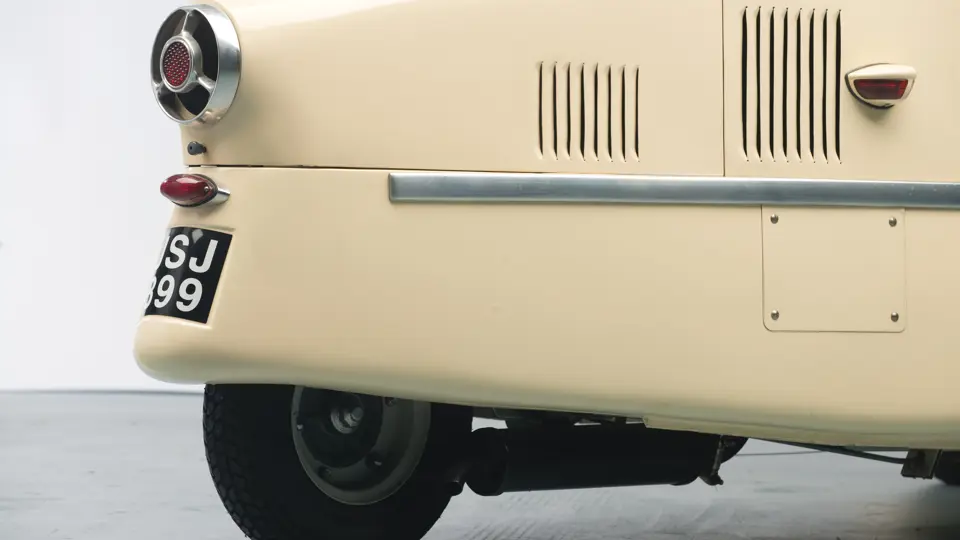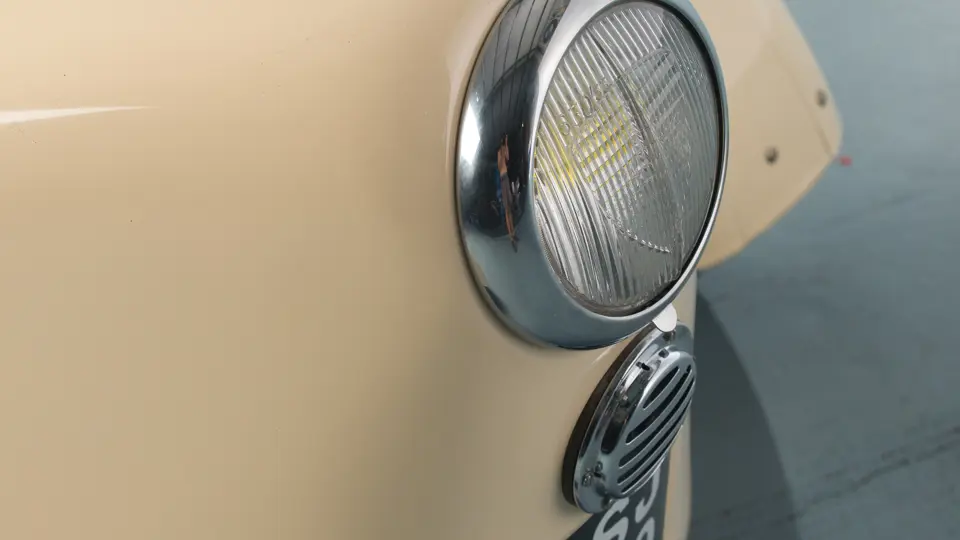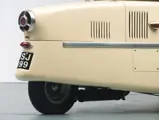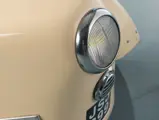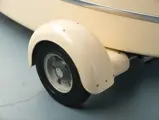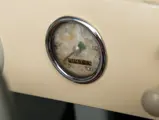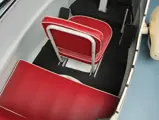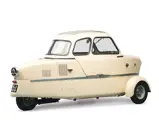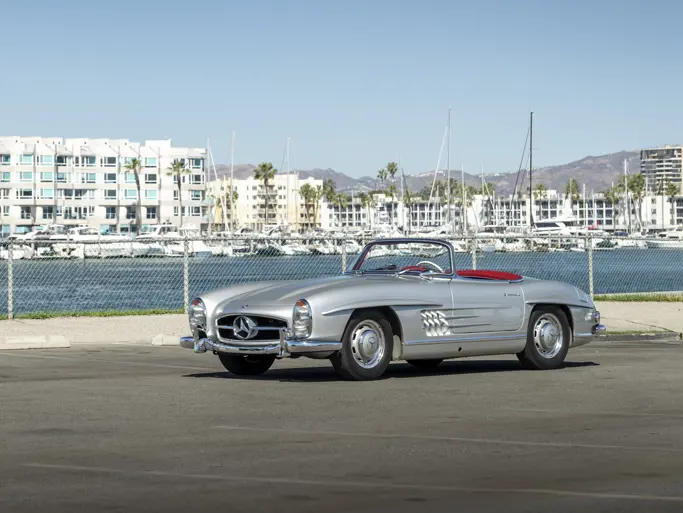Interesting engineering; restored by marque expert.
SPECIFICATIONS
Manufacturer: Societe Nationale de Construction Aéronautique du Nord
Origin: Lyon, France
Production: est. 280
Motor: Ydral 1-cyl, 2-stroke
Displacement: 175 cc
Power: 8.5 hp
Length: 9 ft. 8 in.
Identification No. 1706
The Inter is the one microcar in the entire collection whose sleek lines most closely resemble those of a small aircraft. The Cyclops headlight, slab sides, tapering tail, and in particular, the shape of the nose contribute to this impression, as do the separate wheel spats and the steering handlebar. It comes by its avionic looks honestly, as it was produced in the aeronautical factories of S.N.C.A.N. (Société Nationale de Construction Aéronautique du Nord) on behalf of A.E.M.S. (Ateliers Electromechaniques de la Seine), and sold by G.E.S.C.O.F.I. in Paris. The French do love their acronyms.
Introduced at the Paris Salon in the fall of 1953, the little “Autoscooter” was a sensation. It was positioned in the marketplace as halfway between a scooter and a small car, offering stability and complete weather protection, combined with the nimbleness in traffic and simplicity of maintenance of a scooter. The prototype on display was still under development, however, and the actual production car differed slightly in appearance when it finally became available to the public in the spring of 1954.
Two models were offered: the “Berline,” with a left-side hinged canopy complete with glass windows in the front and rear and sliding plastic side windows, and the “Torpedo,” with a small Plexiglas windscreen and no lifting canopy. Seating was in tandem, with the front seat adjustable. The sunroof consisted of an elasticated piece of fabric that fitted around a lip surrounding the roof opening. The Ydral motor (the odd name is a reversal of the designer’s name, Lardy), in at least two versions, drove the rear wheel by chain. The front outrigger wheels were covered by full helmet-type fenders, which turned with the steering. A startling feature was the ability of the front suspension to fold together on parallelogram arms upon releasing two pins, thus reducing the overall width from 4.4 feet to 2.9 feet. Much was made of this ability to pass through garden gates, but in reality, it was found to be impractical, and the majority of the cars had fixed suspension. The wheels were sprung by Niemann rubber rings, still in use on French trailers in modern times. Also typical of aviation practice is the bicycle chain steering, in this case connecting to a rack and pinion.
Yet another startling aviation-type feature of the Inter is its Westinghouse “Gyrostarter,” a system similar in principle to that used on helicopters. Raising the starter lever inside the cockpit causes the flywheel to spin at an ever-increasing speed, accompanied by a whining sound that rises in pitch. Once the gyro is up to speed (at least 10 seconds is recommended) the lever is quickly dropped, engaging the motor via a hefty clutch and imparting the flywheel’s stored rotational energy to the motor, which starts and then reverts to generator mode. This system was not particularly effective on an out of tune engine, as the six volt battery was only good for two or three attempts. The starting sequence itself never fails to draw a crowd.
The cars were constantly under development, and it seems no two cars were ever exactly alike. It is a great source of interest to make detail comparisons between vehicles. On late cars, the single central headlight was dropped in favor of two fender-mounted lamps. Full width Messerschmitt-type front fenders were also experimented with. Only a small number of these rare and elegant vehicles exist today; this particular car was restored to a high standard by the British Inter expert Robert Purton.


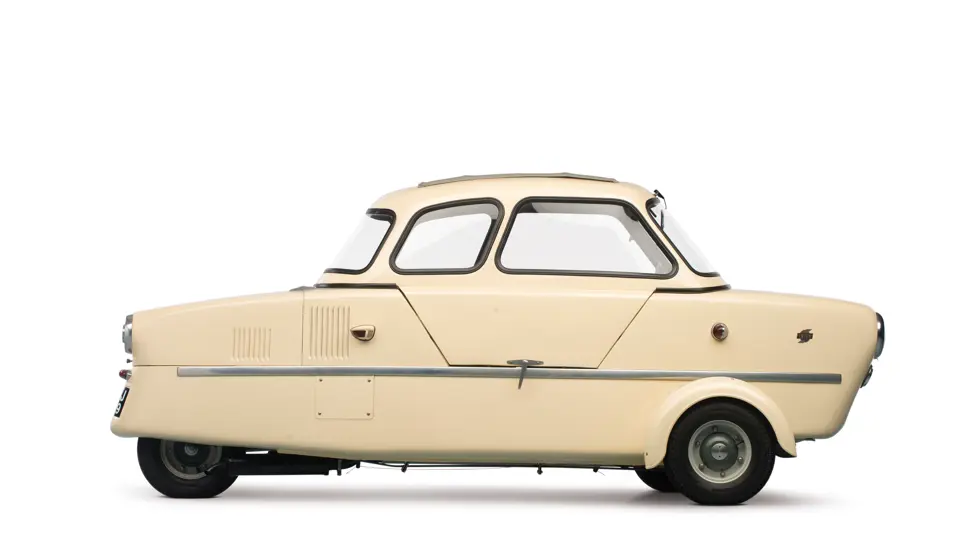


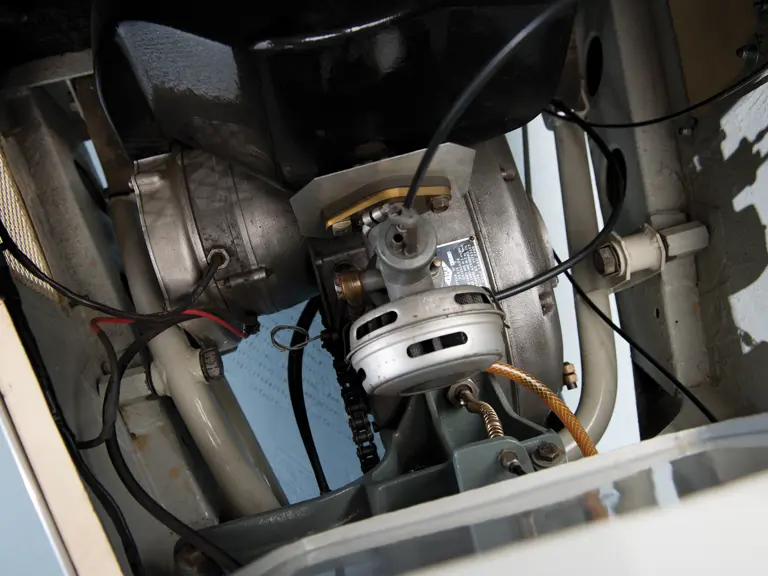
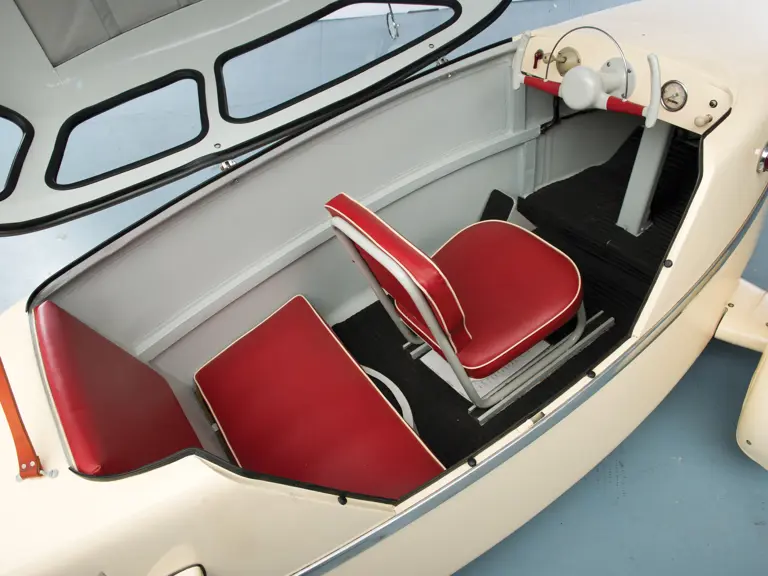
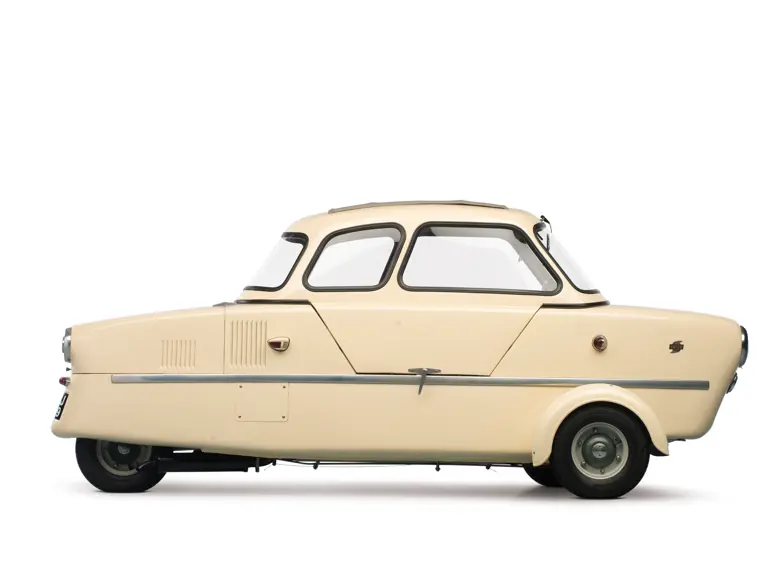
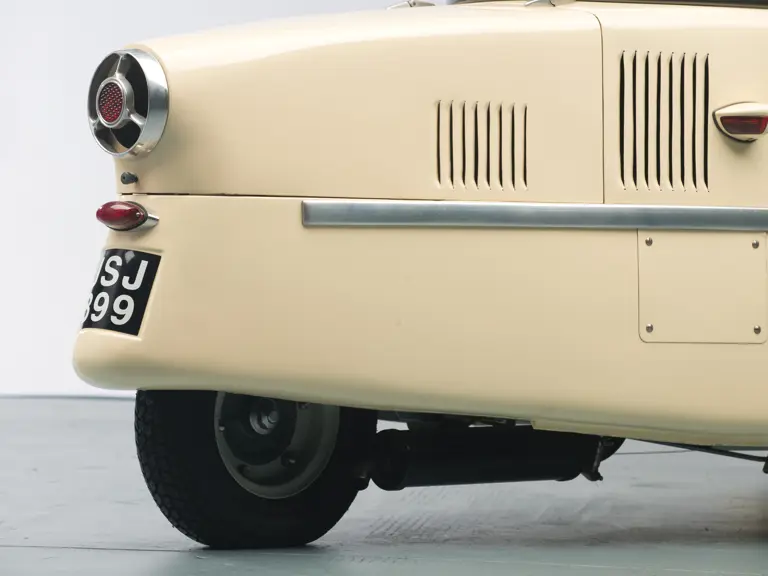
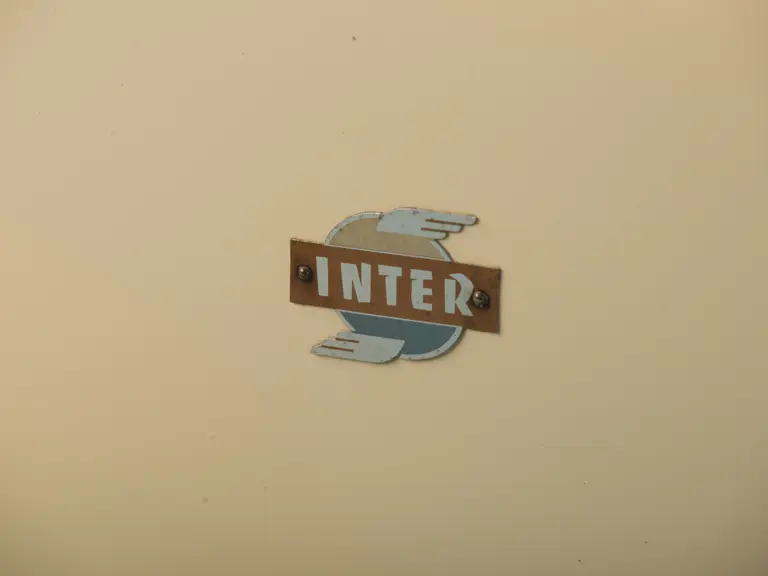
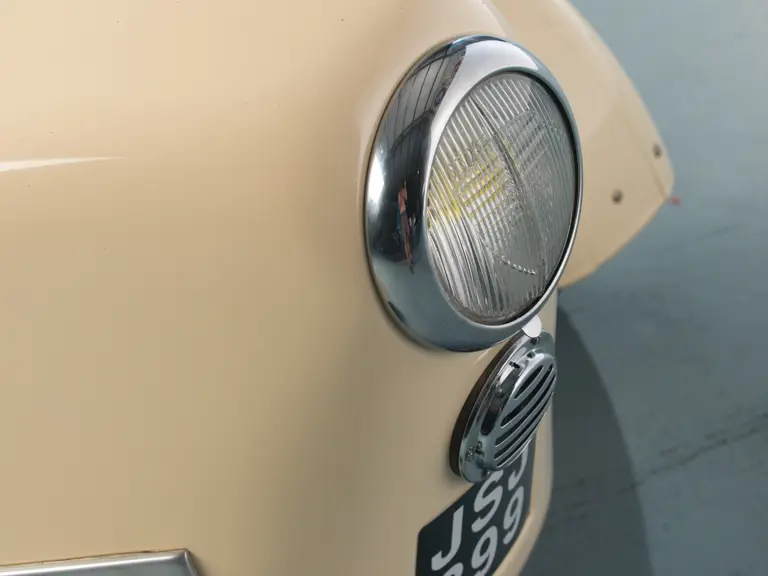

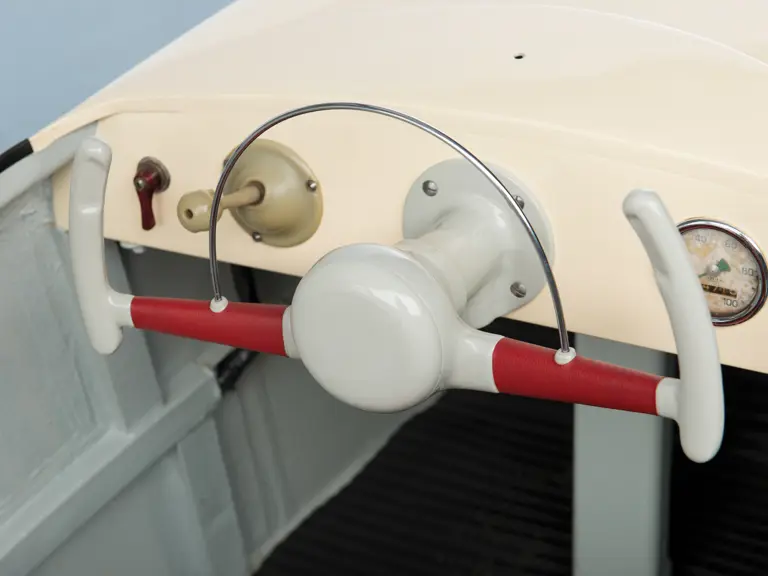

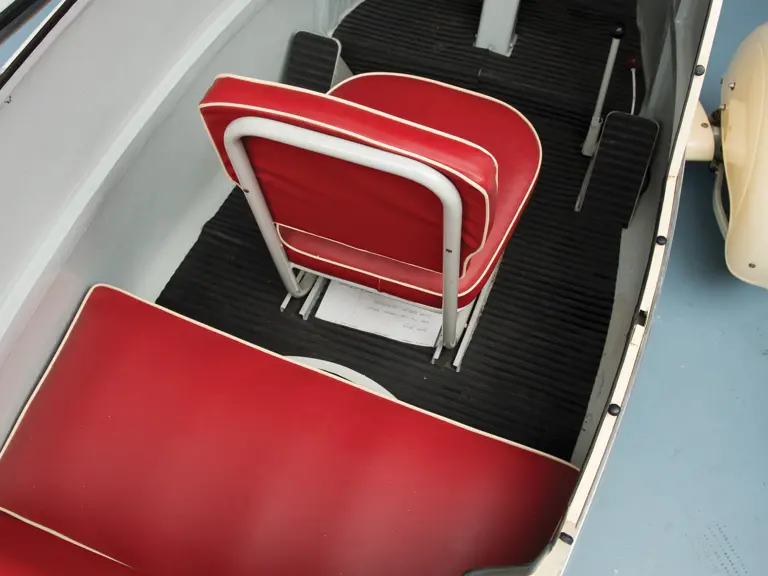

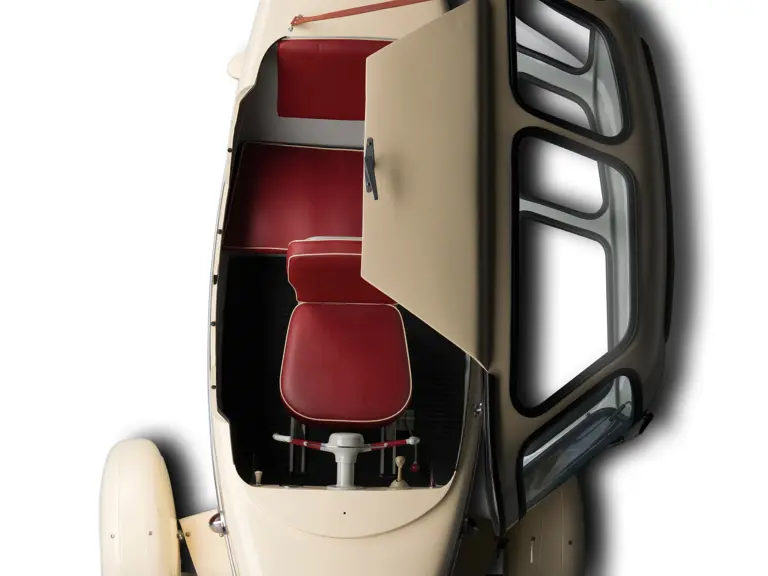
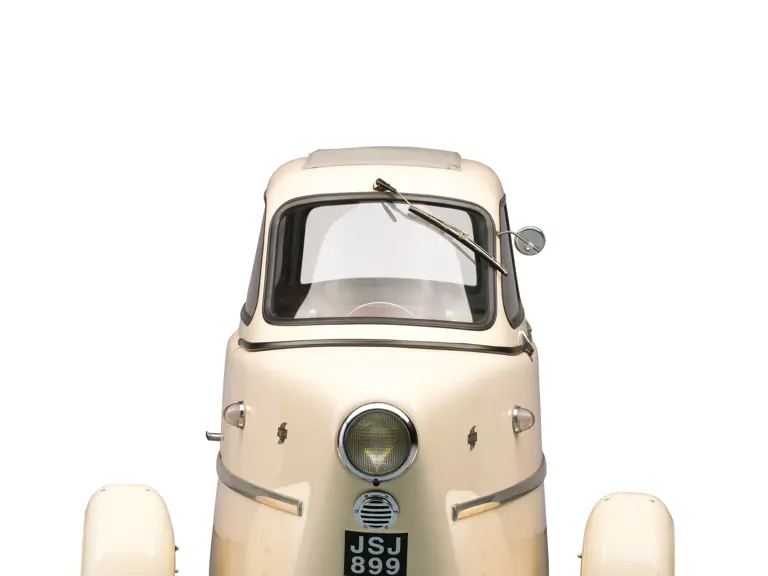
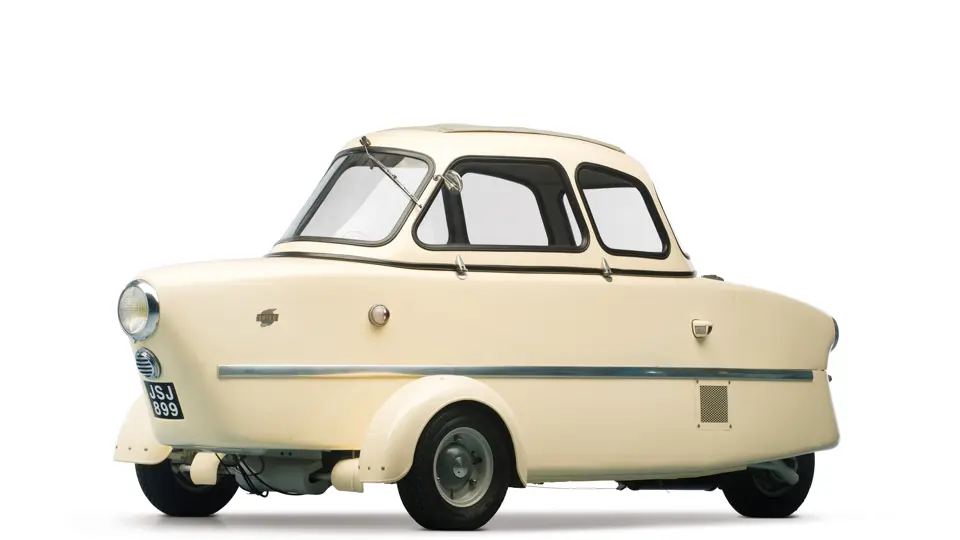
 | Madison, Georgia
| Madison, Georgia
